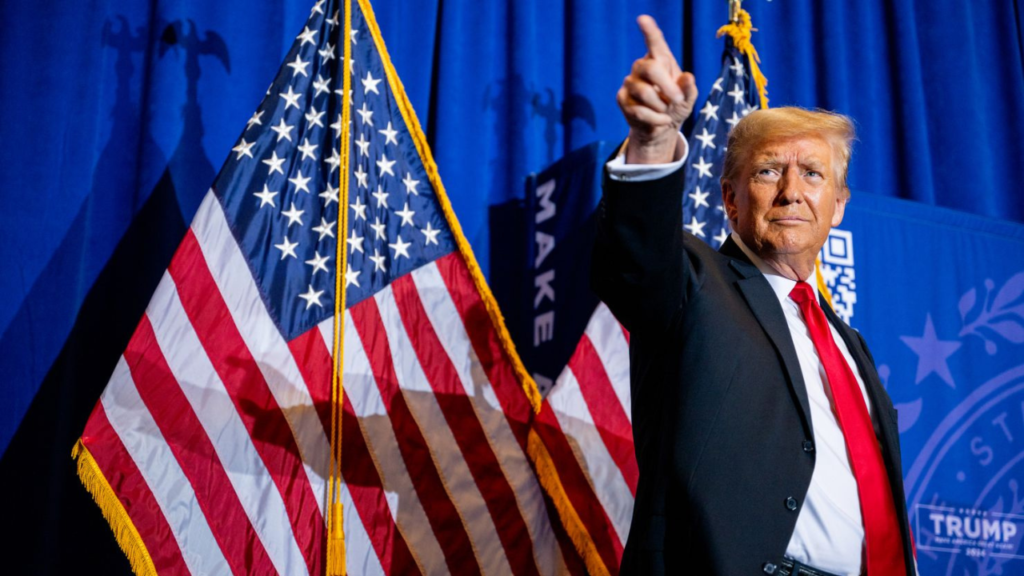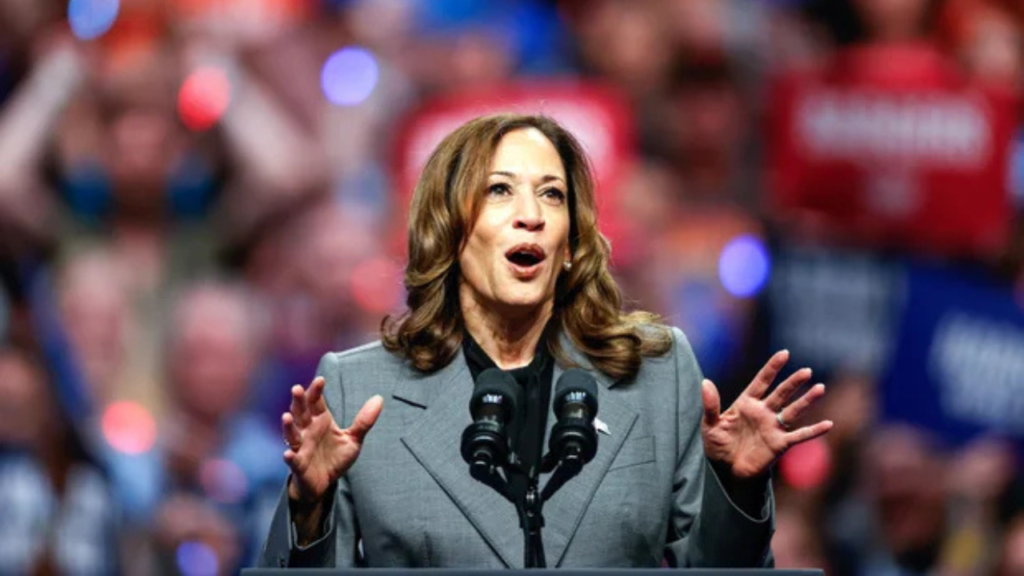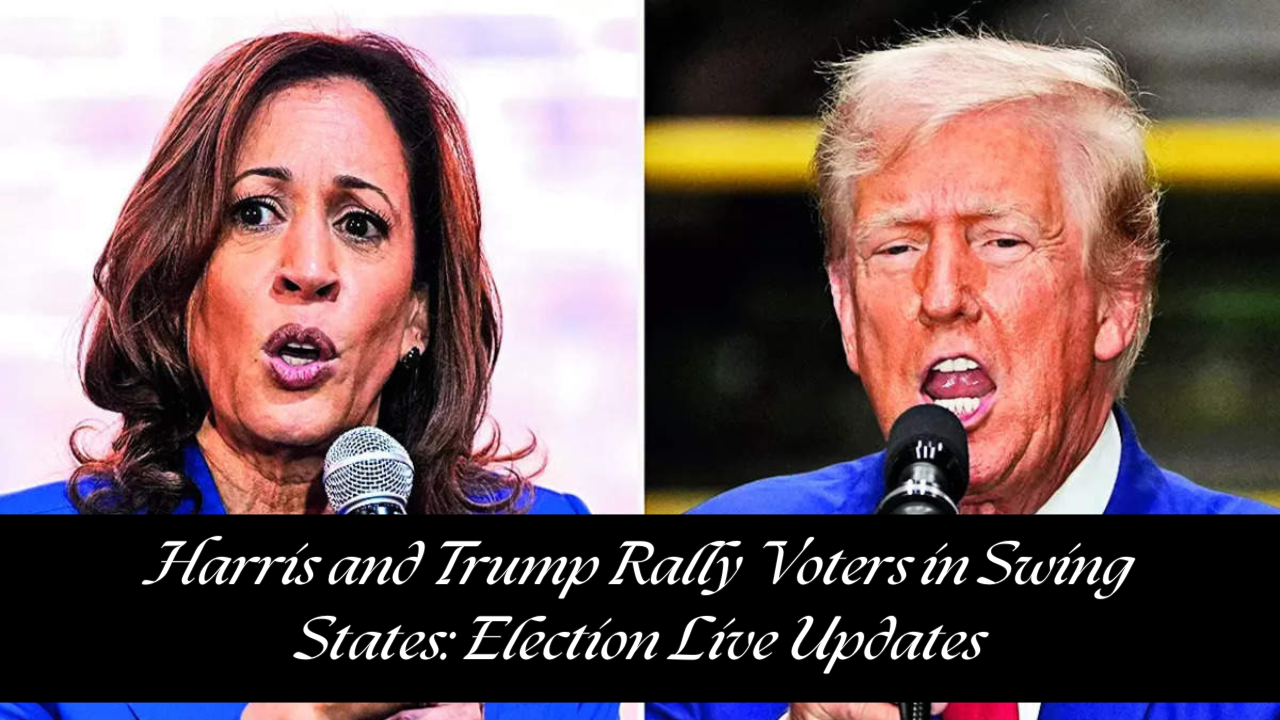The White House race is getting hotter by the day because of the presidential contest in 2024, with both sides chipping away at each other with strategic maneuvers in key battleground states.
Vice President Kamala Harris and former President Donald Trump staged rallies across a string of pivotal swing states on a crucial Sunday ahead of election to drive home their importance in deciding next president.
Often considered the heart of the political process, these states have traditionally determined the outcome of national elections; hence, both parties believe capturing the hearts of voters here may be the magic key to success in 2024.
1. The Importance of Swing States
Those that are sometimes referred to as the swing states, or battleground states, are those in which neither the Democratic nor the Republican party clearly, consistently has a majority. Swing states are crucial in close elections unlike strongly red or blue states since they allow hands to pass from one election to the next.

States like Pennsylvania, Michigan, Wisconsin, Florida, and Arizona have been especially important in determining past presidential elections; they will be especially important in 2024 as well. Such political volatility makes two of the swing states the center of both contests.
The candidates make constant visits and deliver a personalized message in these regions with an appeal to sway undecided voters, energize their respective bases, and remedy the specific grievances of the people residing in these states. A campaign can either win or fail based on one’s understanding of the swing state voters’ pulse and meeting their demands.
2. Kamala Harris’s Campaign Focus
Particularly in the effort to hold Democratic control of the White House, Vice President Kamala Harris has been a key actor in the campaign actions of the Biden administration. Harris appeared today on this critical Sunday in Pennsylvania and Michigan, two of the country’s most crucial swing states with marginally favorable outcomes for Democrats in 2020.
Healthcare, climate change, women’s rights, and voting rights are just a few of the subjects her campaign most frequently zeroes in on—those that resonate with the Democratic base. Harris underlined in her Pennsylvania rally the achievements of the Biden government in recovering the economy, lowering unemployment, and increasing healthcare access.
Emphasizing that the Democratic Party is concentrated on creating a green economy that offers sustainable employment for next generations, she also fiercely supported the government’s initiatives to fight climate change. Harris also addressed issues about voting rights, a major topic in the state following a string of court conflicts following the 2020 election.
Harris stayed in Michigan emphasizing infrastructure and economic recovery. Particularly in swing states like Michigan that have seen economic difficulties recently, the Biden administration’s bipartisan infrastructure bill—which distributes billions of dollars to rebuild roads, bridges, and broadband internet access all around the nation—is a major appeal to the Democrats.
Harris said the gathering that the government is dedicated to restoring the middle class and making sure nobody falls behind while the nation heals from the financial effects of the epidemic.
3. Donald Trump’s Battleground Strategy
Former President Donald Trump organized rallies in Florida and Arizona, two states he won in 2016 but lost to Joe Biden in 2020. Efforts to recover the populist vitality that drove Trump to the White House in 2016 define his campaign.
His rhetoric still revolves on border security, economic progress, and his allegations of electoral fraud in the 2020 contest. Trump’s Florida gathering concentrated on national security, immigration, and restoring “law and order.”
Issues that really appeal to conservative voters in the state, he underlined his intentions to guarantee the southern border, stop illegal immigration, and fight growing crime rates. With a sizable Latino population and a lot of retirees, Florida is a varied state where Trump’s emphasis on economic development and security fits really nicely.
The Arizona gathering organized by Trump had a similar attitude. Arizona has been a fiercely contested state in recent elections; Trump’s priorities here were his ideas to boost the economy, cut taxes, and bring back jobs from abroad.
He also kept underlining his resistance to what he defines as the “radical left,” aiming at progressive ideas he thinks are damaging the nation. It was this promise among others that Trump focused most of his criticism against Biden’s government on, relating to energy policy as well as inflation, something he promised to do by revoking Biden’s programs that were focused on climate.
4. Voter Reactions in Swing States
With both Harris and Trump focusing on energizing their bases and flipping undecided voters, the protest movements in battleground states mobilized large numbers of people. However, each has unique challenges.
As the vice presidential candidate, Kamala Harris’s task is to energize the Democratic base but also attract moderates and independents who may be unmoved or undecided about the record of the Biden government so far.

One of the biggest strengths Harris has is speaking to the younger voter and especially women, particularly issues with respect to health care, education, and reproductive rights. Her capacity to inspire those groups may prove pivotal in swing states.
Indeed, Trump’s rallies now look like an attempt to shock his base back in focus, infusing new life into the populism that carried him into the White House in 2016. He has the strong opposition still, but on the themes of immigration, national security, and economic growth, his mobilizing conservatives happens to be an asset.
Trump’s repeated allegation of election fraud and illegitimacy of the 2020 election can be increasingly chipping away support from the center streams of voters, who are more concerned with look-forward programs and solutions to problems at hand.
5. Key Issues in Swing States for 2024
Both camps are quite aware that what the result of the election will eventually depend on is the issues most occupying swing state voters’ minds. The rhetoric in 2024 will revolve around the economy, healthcare, immigration, and voting rights.
- Economic issues are of more concern in battleground states and especially in the Rust Belt. Harris’s message largely hangs on the initiatives that would prove to be the Biden administration’s boost to economic stimulus in hopes of creating jobs through spending money on infrastructure. But such policies come especially well with working-class appeal: he is sure to bring back manufacturing employment and lower taxes.
- Healthcare still remains one of the most burning issues, which can be distinctly seen in states like Pennsylvania and Michigan, where affordable treatment is a grave worry. While Trump bashed the Affordable Care Act and promised to lower prescription prices, Harris indicated the Biden administration would push for increasing healthcare coverage.
- Immigration: Also fiercely debated in states like Florida and Arizona, immigration is an issue on which Harris and the Democrats want thorough immigration reform with a more sympathetic approach to Asylum seekers while trump’s tough stance on border security resonates well with Americans worried about illegal immigration.
- Voting rights feature primarily since the scandals linked with 2020 elections, especially in swing areas that have acquired new voting rules. Harris has paid much attention to defending voting rights and equal access to ballots, while Trump insists that the 2020 elections were stolen and continues pushing for stricter voting rules.
6. What’s at Stake in 2024
The protests initiated by Harris and Trump on that crucial Sunday expose high stakes in the 2024 election. Focused on the same thing–representing their base and winning over the undecided in swing areas as the nation sharply splits–the result on these battlefields will likely determine who will next occupy the White House.
The rhetoric in social justice and economic recovery for Kamala Harris and the Democrats is to maintain the gains of the Biden presidency. The agenda for Donald Trump and the Republicans is to roll back the programs initiated by Biden and reclaim a more conservative image of America.
The battle for swing states will intensify only with the elections approaching, with both parties dishing out significant amounts of money to these battleground locations.

When Harris and Trump run against each other, they should be prepared to see much more than just their faces around election season in Pennsylvania, Michigan, Florida, and Arizona, and possibly other battleground states.
7. Conclusion
These protests, led by Kamala Harris and Donald Trump, on this critical Sunday in swing states reflect the importance of the battlegrounds in the next 2024 contest. Indeed, the two contenders know that winning in these states would determine the whole outcome, hence their campaigns focus more on how to energize their supporters and pay attention to the most burning issues of the voters.
The fight for swing states will always find themselves right at the center of political debate as the race gets more heated and intense by each passing campaign event. With the stakes so high, every rally, speech, and even any voter contact might mean the difference between another US president.
FAQs:
Why are Harris and Trump focusing on swing states?
These swing states were important because they held never to tilt toward the favor of one party alone, making them battlegrounds where choices would be made in whom to elect.
Which swing states did Harris and Trump visit?
Harris went on a touring spree around Pennsylvania and Michigan, while Trump went campaigning in Florida and Arizona-all critical swing states for the 2024 election.
What issues is Kamala Harris focusing on in her rallies?
Health care, economic recovery, climate change, and voter rights have been the core campaign themes of Harris.
How do voters in swing states feel about the candidates?
Divided in the swing states, Harris reaches out to the young and moderate voters, and Trump retains the conservative and populist elements.

